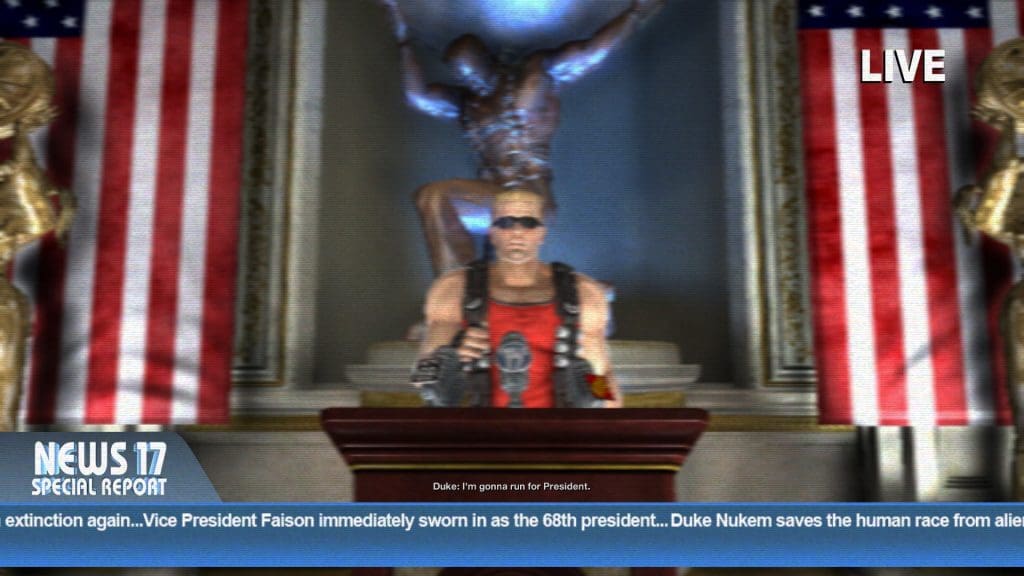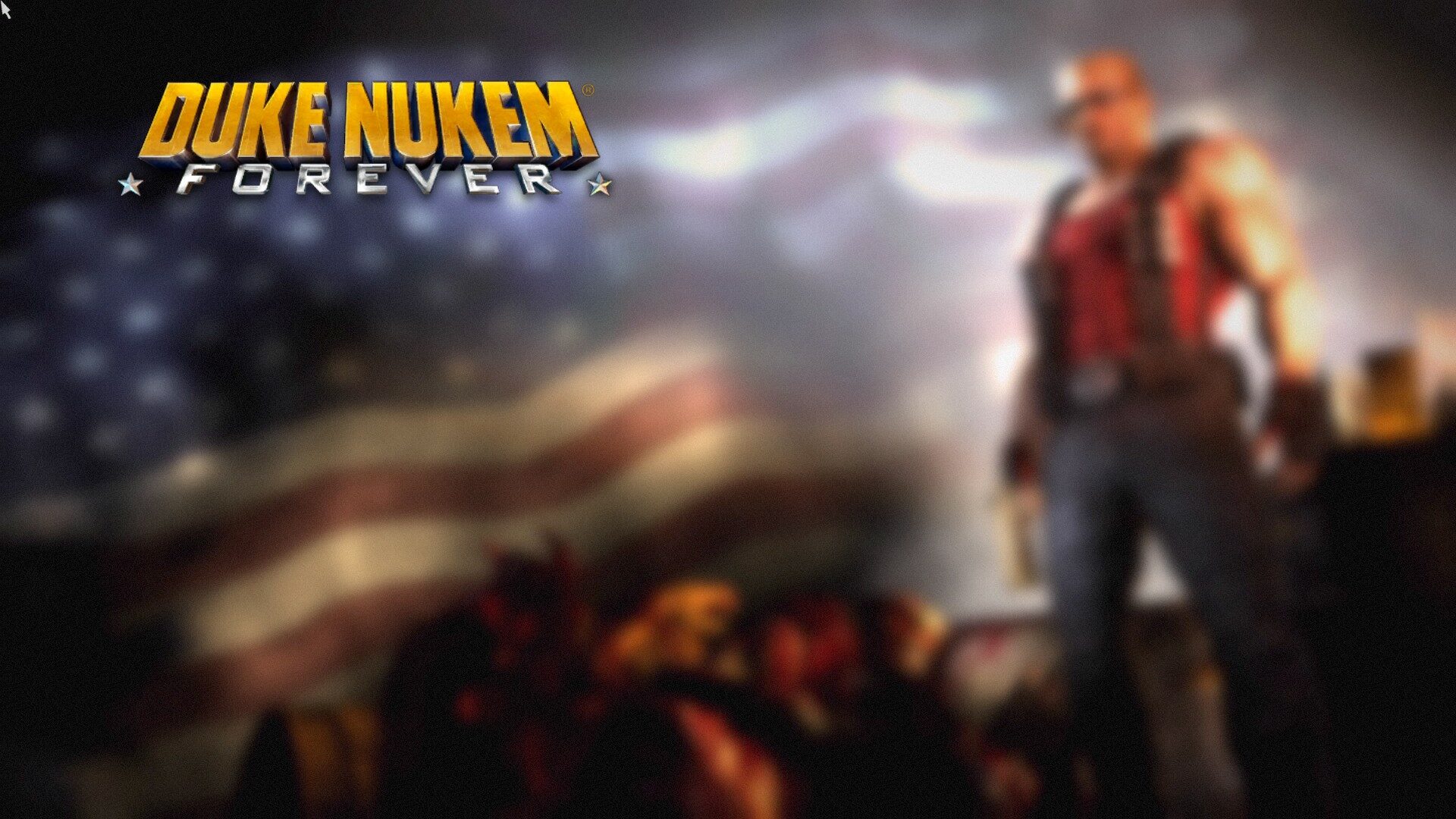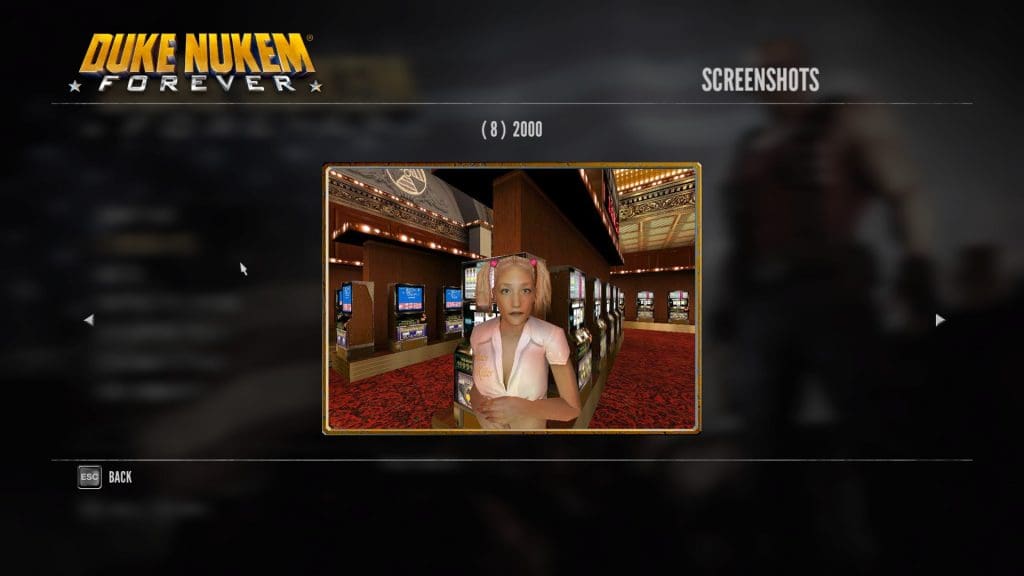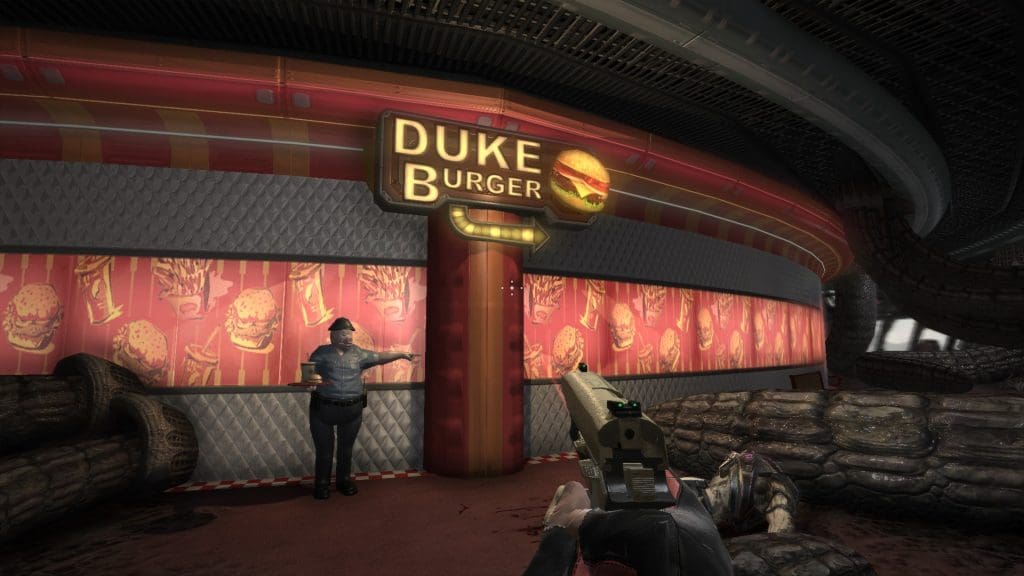Greetings Backloggers! Welcome back from summer vacation. The Burndown spent the summer trying to get a tan, and then a lot more of the summer hiding away from the evil glowing sky orb while recovering from sunburns inflicted upon its poor, pale body. At least I had time to finish a few games!
First on the summer gaming lst: the poster game for development hell; Duke Nukem Forever (DNF). Originally anounced in 1998, the long awaited sequel to FPS classic Duke Nukem 3D finally saw release in 2011 after a torturous fifteen year wait. No game could have lived up to that hype. DNF (ironic that that acronym also stands for Did Not Finish in racing) couldn’t even come close to matching its hype train.
Given that kids born during the year Duke 3D was released are now able to legally purchase beer, it’s understandable that a lot of readers may not remember why Duke Nukem was a big deal in the first place. Perhaps a brief history lesson is in order. In 1996, 3D graphics cards were just starting to gain market traction. id Software was following up their Doom franchise with Quake, the first major true 3D FPS. Apogee answered with Duke Nukem 3D, pulling side-scrolling action character Duke Nukem into a big FPS adventure using a heavily tweaked Build engine for a 2.5D effect.
Gamers largely split into two camps. Quake’s single-player campaign was grim and somewhat bland, but its multiplayer built on the strengths of Doom to become one of the first eSports. Duke Nukem 3D, meanwhile, featured a huge amount of personality in single-player, and a diverse array of crazy weapons. However, Duke 3D, never caught fire with the multiplayer community like Quake.
Hit games, of course, demand sequels. id Software responded with Quake II, released in 1997, and Apogee announced Duke Nukem Forever, built on a new, truly 3D engine, to be released in 1998 or 1999. Of course, as we know now, that never happened.
DNF went through multiple engine changes, each one requiring significant rework and a new learning curve. A 2007 teaser trailer seemed to promise that the game would be out soon, but Apogee’s financial woes nixed that. Gearbox Software, helmed by Apogee founding alumnus Randy Pitchford, would ultimately rescue the license and assemble a team of mostly ex-Apogee developers to form Tryptarch and finally get the game out the door.
In some ways, DNF is a time capsule, highlighting how the FPS genre evolved during DNF‘s fifteen year development cycle. Boss battles and jumping puzzles were still a common part of ’90s shooter ethos, so DNF has them. Half-Life 2 and Portal brought physics puzzles to the mix, DNF needed them as well. Halo, Call of Duty, and other modern shooters minimized the player’s weapon inventory; DNF does that, though with a concession to the past that players have an option to increase the weapon limit to four. There’s driving segments, static gun turret bits, and carnival ride shooter set pieces. The game has a little bit of everything, like a bulletpointed feature list that just kept growing longer as development went on.
What it’s missing is a harsh bit of editing. Everything just goes on a little longer than it should. Driving a rocket-boosted monster truck is fun! But by the third time said truck runs out of gas, forcing the player to get out, slog through a tedious bit of alien killing, solve another bland physics puzzle, find a gas can, and walk back to the truck, the charm has worn off. Solving a couple of size based puzzles where Duke is shrunk down with alien technology is interesting! But not for the fifth or sixth time it happens.
Boss battles should be retro fun and challenging, but even those devolve into boring, formulaic sequences of Dodge, Shoot, Dodge, Shoot, Cower and Regenerate Health, Reload, Repeat. There’s too many boring, empty corridors, abandoned staircases, and pointlessly long elevators.
To sum the game up in a single moment: about midway through the game there’s a puzzle that involves pushing pipes and activating valves to direct some steam onto some alien garbage to clear a path. Duke snarks “I hate Valve puzzles.” But instead of simply cutting the Gordian Knot with a bomb or rocket, the player is forced to complete the puzzle.
The DNF campaign is essentially six hours of action shoehorned into eleven hours. What needed to be a tight, focused experience highlighting retro FPS sensibilities and Duke Nukem’s trademark snark, becomes a bland slog with a mouthy hero who just can’t live up to his own PR.
The truly sad thing, is that DNF probably killed off any future Duke Nukem games. That’s a shame, because his brand of catchphrase spouting, politically incorrect, hypermasculenity would find perfect parody foils in much of 2017’s insanity.
Backlog Verdict: Playable, but just barely. Duke Nukem fans, and those curious for a playable FPS time capsule will benefit, but make no mistake, this is a mostly a boring slog of an FPS.
Previous Backlog Count: 1,212.
Current Backlog Count: 1,212. Holding the line, at least.

A thoroughly unqualified ego-maniac who names every business after himself running for president. Only in a video game.
Next Time: Reading time with visual novel Army Gals.
Backlog Burndown is a semi-regular feature on Marooner’s Rock. Read previous columns in the archives, and suggest future games to play in the comments!









